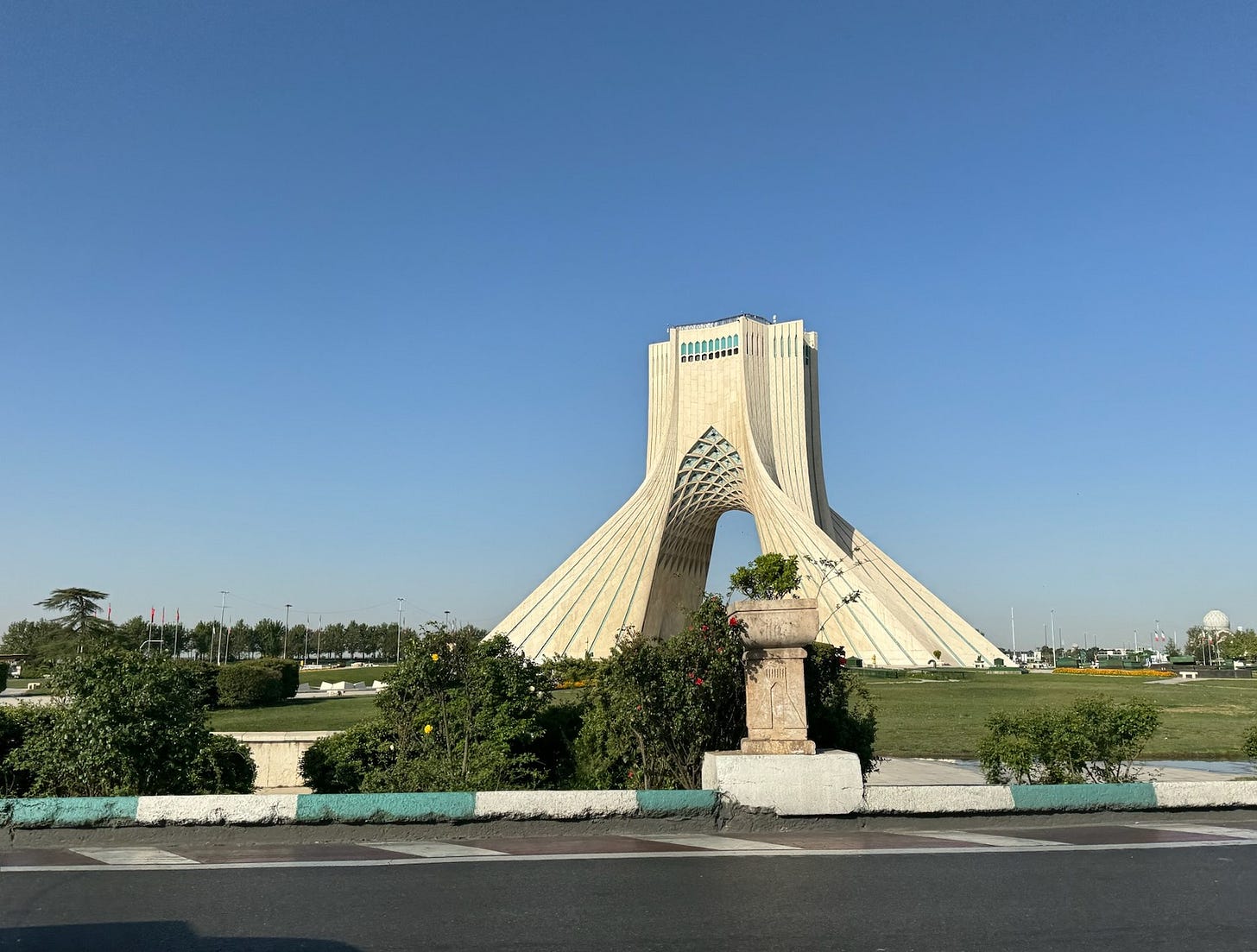At the western entrance to the Iranian capital, stands the Azadi Tower. For most Tehranis, of course, it marks the beginning of that road. The Azadi Tower (aka Freedom Tower) is positioned as a true national anchor, symbolizing Iran's connection to all directions—West included. Commissioned in 1966 through an international competition, the design by architect Hossein Amanat emerged victorious. Standing 45 meters tall and clad in white marble, the tower was envisioned as a beacon of national pride from the outset.
The monument, though designed to draw the viewer’s gaze skyward and inspire the spirit, also symbolizes passage. Its giant Sassanian-inspired arch creates a portal that seems to bridge a glorious past with the present. Hossein Amanat, though only in his twenties and a member of the Bahá’í Faith—a persecuted minority in Iran—demonstrated remarkable ability in encapsulating a profound national message. He blended ancient Persian and contemporary design motifs with four dynamic ribs that appear to converge structurally and symbolically. The marble was sourced from Isfahan province, while the funding came from wealthy Iranian industrialists. The engineering, however, was executed by the internationally renowned firm Arup, adding a layer of controversy to the monument’s creation. Amanat himself fled Iran after the 1979 Islamic Revolution.
Yet the freedom represented by the Azadi Tower remains an ambiguous and fraught ideal. While the monument aimed to embody Iranian modernity and the nation’s ability to define its destiny on its own terms, this aspiration has frequently collided with a long history of external interference. Iran’s oil wealth and strategic position have made it a target of Western economic manipulation, political pressure, and outright intervention. The freedom implied by the tower’s name, either pre- and postrevolutionary, carries a heavy irony, shaped as much by external projections as by internal struggles.
This post contains a preview of a forthcoming book about Journey to the East, highlighting the perpetuating tensions and sometimes awkward dialogues between East and West as found on my quest for a New Silk on an Old Road.


